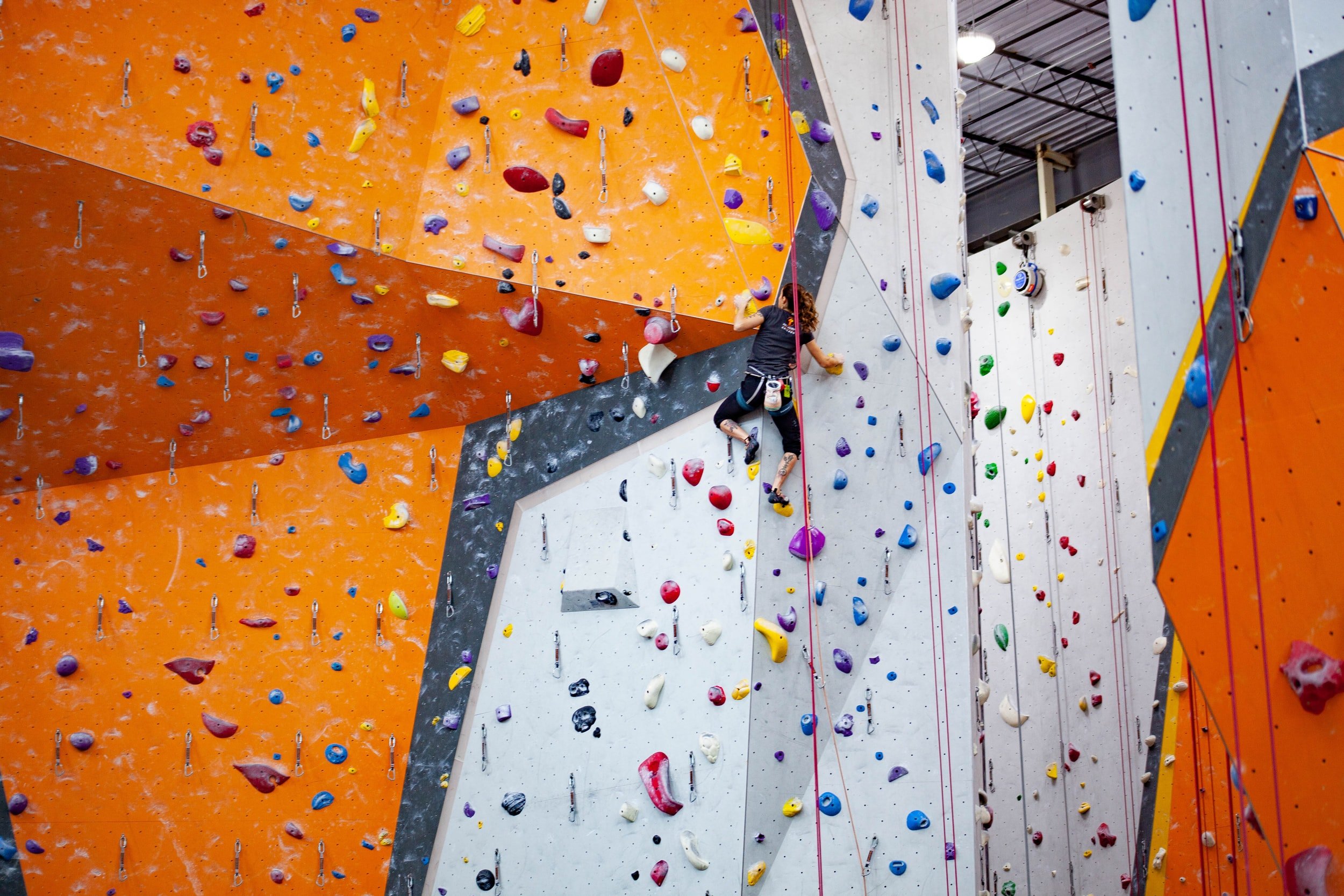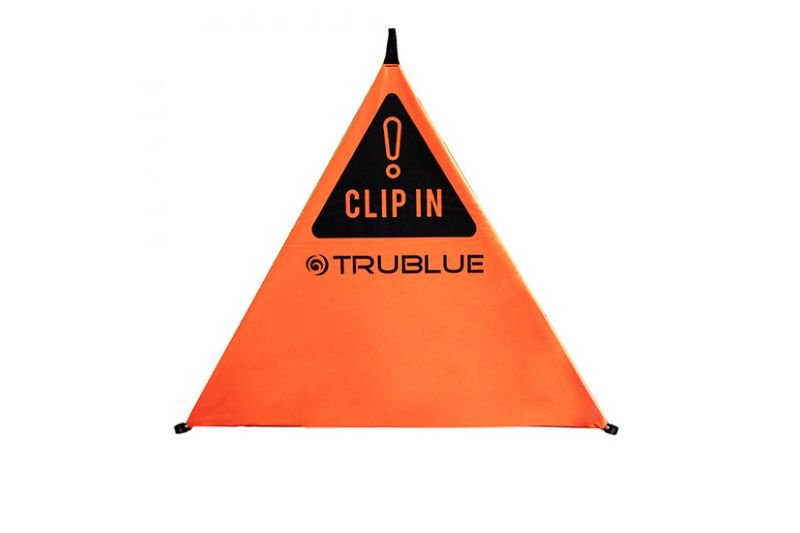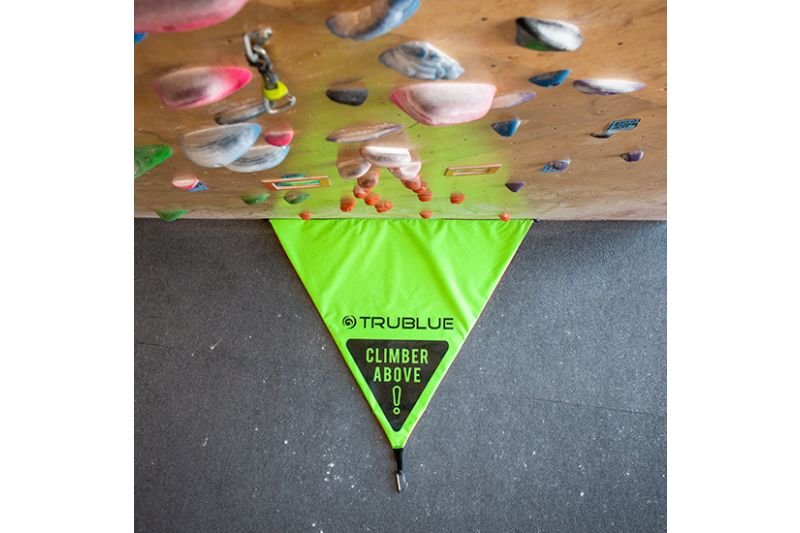Good Design: Trublue Belay Gate
This big triangular piece of fabric may not seem like a very exciting design, but it is saving people from serious injuries. The Trublue Belay Gate sits at the bottom of a climbing route in a rock climbing gym to help people stay safe when using an auto belay system. To understand the need for this big bright design you need to know a little bit about climbing and the history of auto belay systems.
Background
One of the key things to stay safe in rock climbing is to have a good climbing partner. Before starting on a route you and your partner check each other’s equipment and knots to make sure everything is in order. When rock climbing with a rope you will have one person climbing while the other person, the belayer, will be stationary with a device that can arrest the rope in case the climber falls and can lower them at a controlled rate when they want to come down. The belayer and the belay device are important parts of a safe climbing system.
As climbing in gyms has become more popular, auto belay systems (which are also a pretty cool design) have started popping up in more and more climbing gyms. This led to a big problem. A climbing partner was no longer there to double check your safety.
This has led to injuries and even death [1], but in gyms using modern auto belay systems the injuries are rarely from a failure of the auto belay device. Many of the people injured are experienced climbers. Quite often they simply forgot to clip into the auto belay. As tasks become more familiar it leads to more of the actions being done subconsciously. These climbers got so used to the task that it became automatic, and by being automatic it was easy to skip a step. This leads to an interesting design question: how can the system be changed to encourage using the auto belay correctly?
The Trublue Belay Gate
While most of the time we want to make using our designs easier, in the case of auto belays, companies like Trueblue needed to add something to make it harder for someone to start a climb. The big triangular piece of fabric called the Belay Gate covers up the very bottom of the route, and you would have to deliberately bypass the gate in order to start the climb. The auto belay carabiner is now clipped to the belay gate instead of a bolt on the wall. Once you unclip the carabiner the belay gate will fall to the ground and you can climb. Since you now have the auto belay carabiner in your hand, you are more likely to clip in safely.
When the belay gate is on the ground while someone is climbing, it also serves to alert people on the ground that someone is climbing above and to stay clear of the area directly below the climber.
Design Lessons
The Belay Gate teaches two important lessons:
Solutions to design problems can be very simple- The main part of the design is just a large piece of fabric with attachment points. We don’t have to always create a complex overengineered solution.
Design for behavior change- when we are designing something to change behaviors sometimes we need to make the system easier to use and sometimes we need to add some to slow down users or make something more difficult to the process. Think of a traffic circle, by slowing cars down and directing them, a more efficient system can be made under the right conditions. Be mindful of the behavior you want to encourage or discourage.
As you move around in the world be mindful of small design changes that change your behavior and then remember those lessons for the next time you are designing a product.
References
Climbing Staff. (2014, March 12). Mark Hesse died from Gym Fall. Climbing. Retrieved April 11, 2022, from https://www.climbing.com/news/mark-hesse-died-from-gym-fall/?fbclid=IwAR13FXNmiYRvEsKho6ky_JTggXnLPiRFOd5200DoEa-e_P9V-jGLZfm_CrA
To cite this article:
Mabey, Chris. “Good Design: Trublue Belay Gate.” The BYU Design Review, 11 Apr. 2022, https://www.designreview.byu.edu/collections/good-design-trublue-belay-gate.








